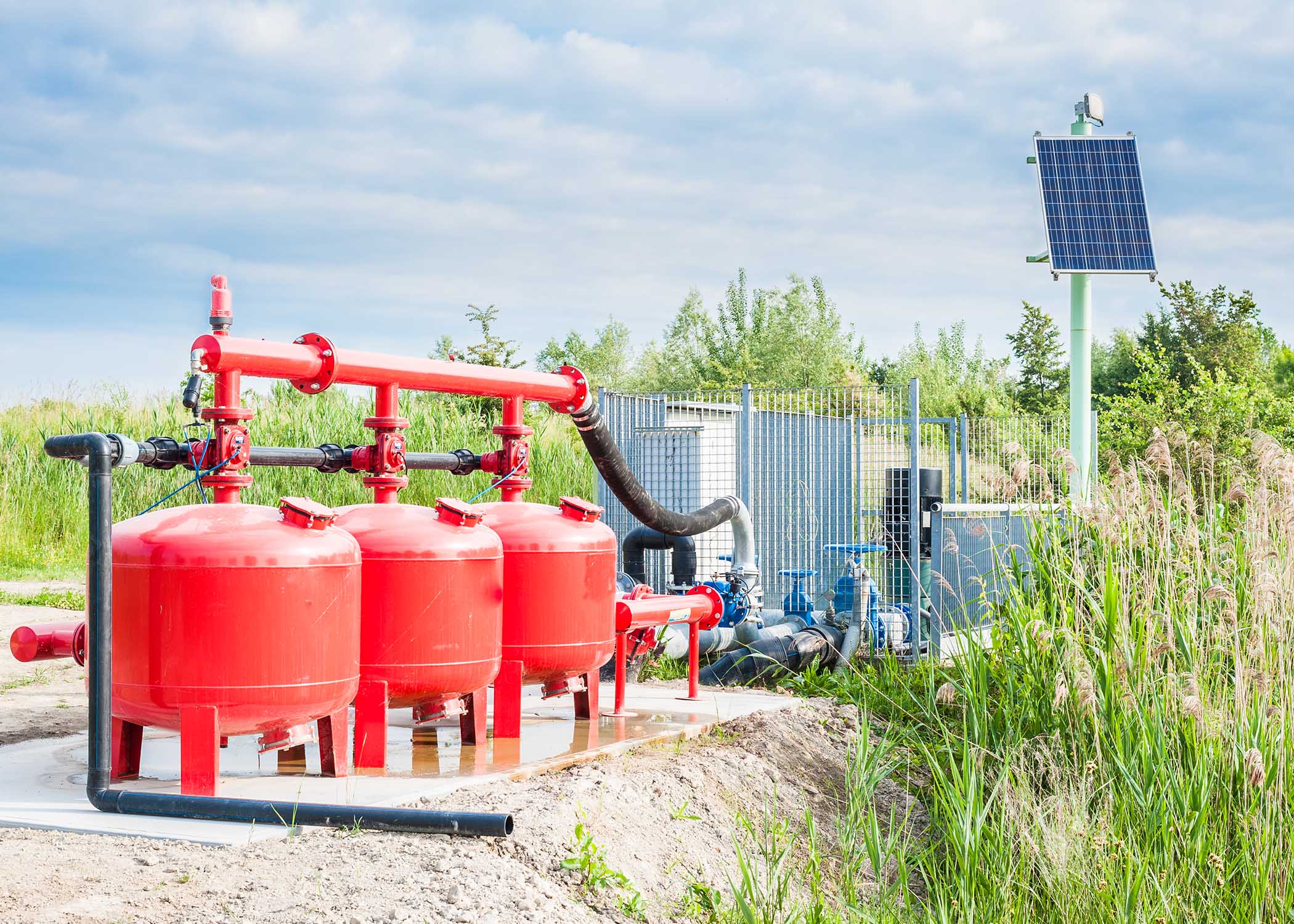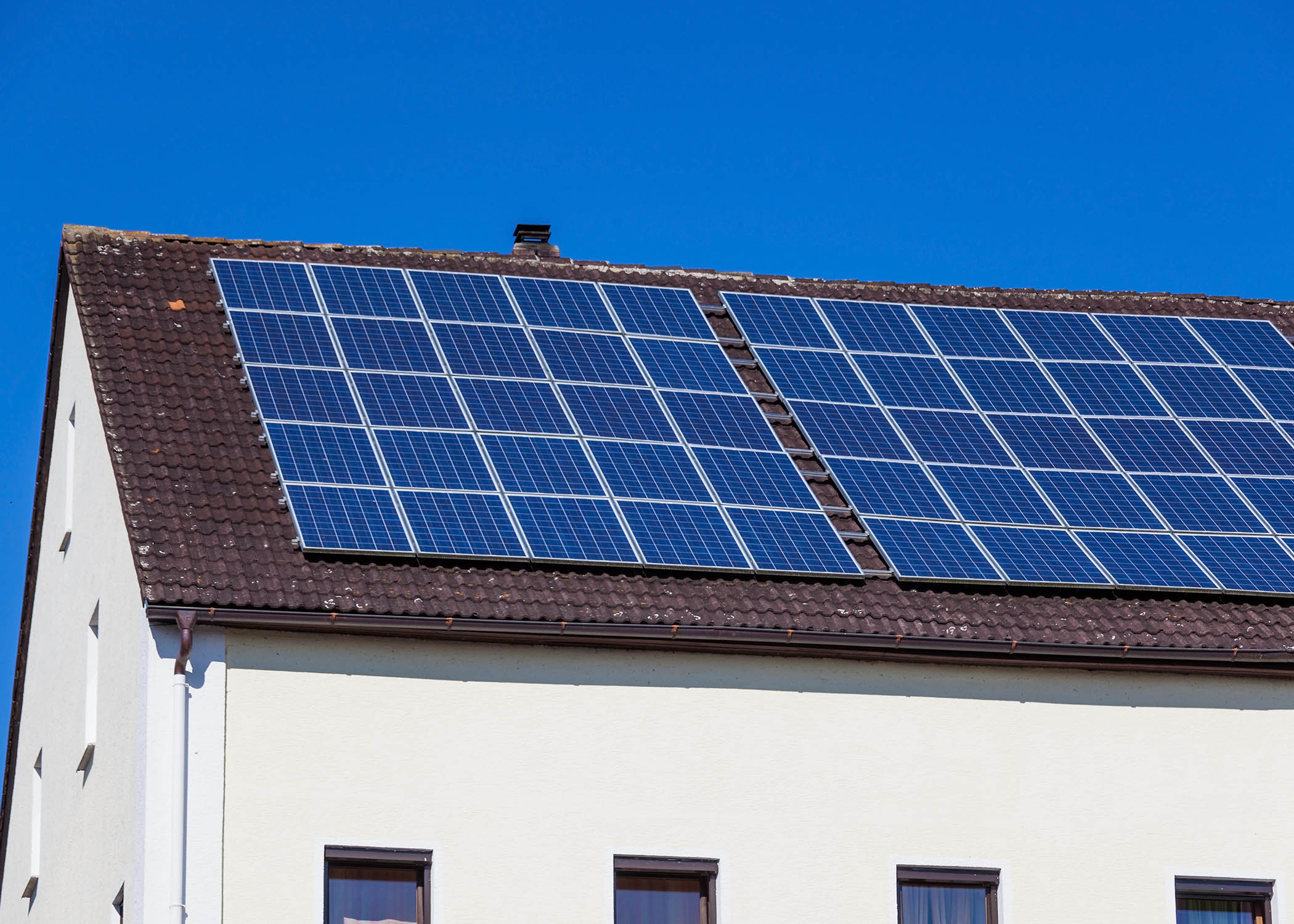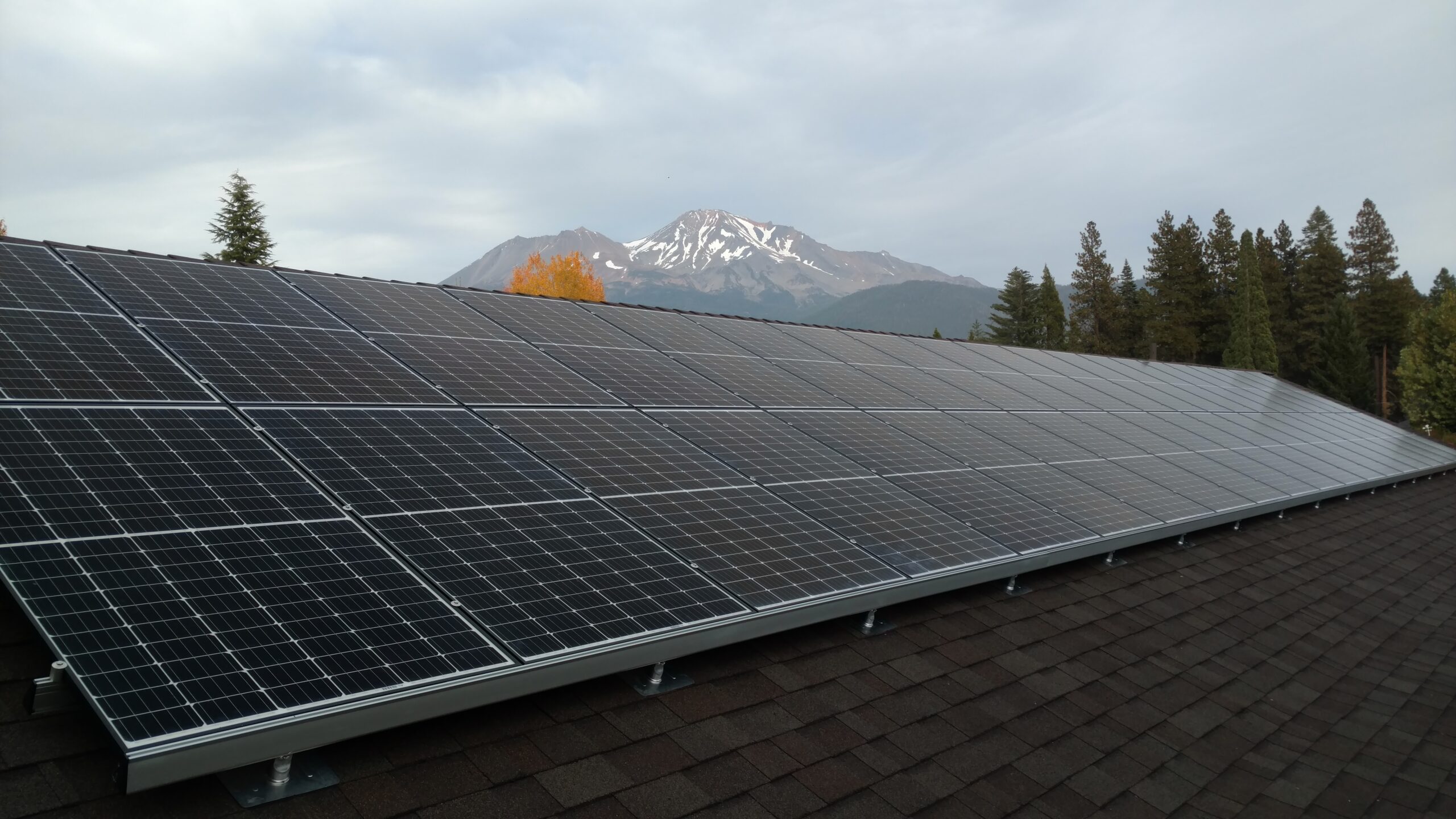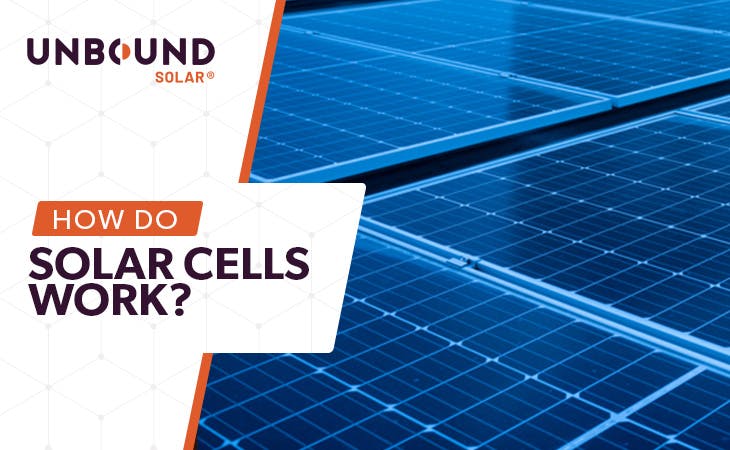
Whether you’re choosing a solar panel for rooftops or remote areas, it helps to have a basic knowledge of the different types of solar cell modules, as well as the benefits and drawbacks of each. However, before anything, it helps to also brush up on the science that goes on behind their sun-powered solar technology, the photovoltaic cells.
So, how do solar panels work? UnboundSolar is here to break it all down and explore the science behind photovoltaic solar cells that make up our solar panels – and in easy-to-grasp basic terms. Ready? Let’s begin.
First, What Are Solar Cells?
In basic terms, a solar cell captures the sun’s energy and transforms it into electrical power. To add, many solar cells are made from silicon, a chemical element found in sand. Solar cells, which are octagonally shaped and lend a bluish hue, are usually arranged to create larger solar modules, which are then made into what we know as solar panel units that rest on our homes, businesses or other remote locations. Solar cells can also be added to smaller solar-powered handheld products like a phone charger or outdoor landscape lighting.
How Do Solar Cells Work?
Okay, now that you know what solar cells are, on to the real question: how do solar cells work? Actually, it’s very similar to a battery. But unlike a battery that derives its electricity from chemicals, solar panel cells use the sun’s energy by capturing sunlight. This sunlight is made of photons, super-tiny particles inside beams of sunlight, which are plentiful, to say the least. Our earth will never run out of photons, unlike other unsustainable energy resources like gas or oil.
So, the solar cells capture the photons, but what comes next? How does a solar cell transform these photons into energy (or electrons) that we use on a daily basis?
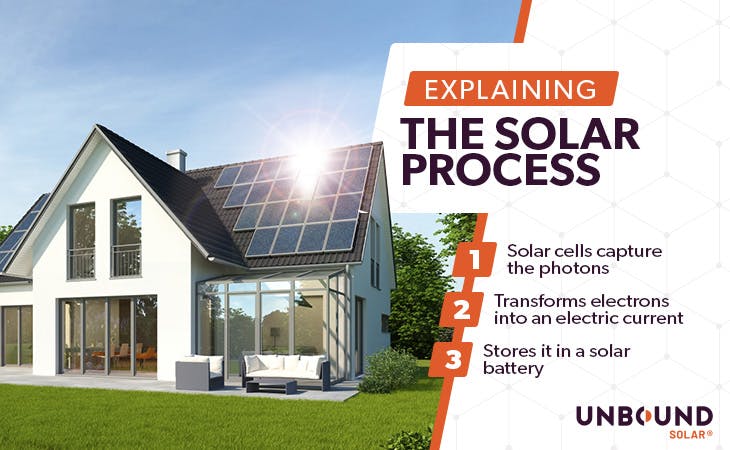
To start, first you need to know that each solar cell is capable of generating a handful of volts (depending on the type). This is why we have to arrange larger solar cell modules into solar panels. Plus, you need to understand how solar panels create electricity.
When the sun’s energy, or photons, reach the solar cell, its atoms basically shake off electrons. Photovoltaic solar panels feature a semiconductor along the positive (P-type silicon) and negative (N-type silicon) layer of a solar cell, and when the shed electrons reach the inverter, converting direct current (DC) into alternating current (AC), it can then transform the electrons into an electric current, very much the same way a battery does. Solar cell systems also capture the energy and store it in a solar battery for continuous use, even when the sun isn’t shining.
Through this electrical circuit, you can run anything with electrical power within the home or wherever you need. If you have multiple solar panel modules joined and wired together, it creates a solar array. More panels = more energy. Voila!
How Do Solar Cells Work in Bad Weather?
So, clearly, solar cells work best on a clear, sunny day. But how do solar cells work when the weather takes a turn for the worse or is simply overcast? And does temperature play a role? It’s no mystery that weather conditions can have a negative impact on solar energy systems, but let’s explore this a bit more.
Ideally, you want a sunny day to produce tons of solar energy. But it’s worth noting that solar panels are not entirely efficient in the dead heat of summer. On the contrary, solar panels are more efficient on a sunny winter day. Why? Since solar panels are essentially an electronic, they will generate less voltage and electricity as the day warms and temperatures rise. However, just because solar panels work more efficiently in cooler temps, doesn’t mean they produce more electricity. Clouds can put a damper on things too and summertime means the sun is out far longer and there are also fewer clouds. Ultimately, while solar panels are more efficient in cooler weather, a sunnier summer day will generate more electricity.
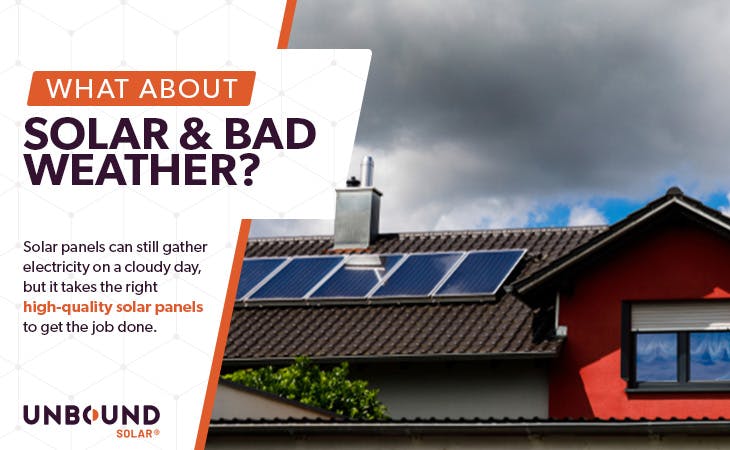
Of course, we can’t talk about the weather without talking about regional climates. Certain regions like the South or California will always get more sunny days that chase the clouds away. So the general assumption is that certain regions of the U.S. and specific states (the Pacific Northwest, Seattle and Oregon, for example) are not-so-great candidates for solar power. However, bad weather is not really the factor.
In short: Solar panels can still gather electricity on a cloudy day (the same way we can get a sunburn from solar radiation), but it takes the right high-quality solar panels to get the job done. We will talk more on that next.
Different Types of Solar Cells and Solar Panels
Now that you understand how solar cells work, let’s talk about the different types of solar cell technology and solar panels. There are three different photovoltaic technologies: monocrystalline (also known as single crystal silicon), polycrystalline and thin film. Below, we dive into each one to help you better understand which solar panel style is best suited for your residence or business.
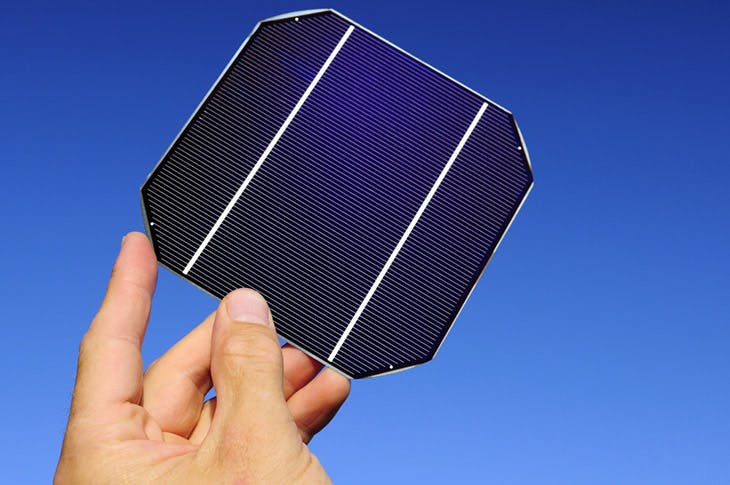
Crystalline Silicon Solar Cells
Out of the three types of solar cells, there are two crystalline silicon versions: monocrystalline and polycrystalline. These are the most common photovoltaic solar technology out there and often what comes to mind when you think of solar panels.
Monocrystalline (Single Crystal) Solar Cells
Invented in 1955, monocrystalline solar cells were the first photovoltaic solar technology. Cut from a single source of dark blue silicon crystal, as opposed to a blend like polycrystalline, monocrystalline solar cells are more durable though both are equally reliable. Monocrystalline solar cells are sliced into fully rounded wafer-like shapes (sometimes trimmed), minimizing waste and maintaining their circle shape to optimize the sun efficiently. Generally speaking, monocrystalline solar cells are more efficient solar cells, with the exception of mono-PERCs, which we’ll dive into later.
Polycrystalline Solar Cells
Polycrystalline solar cells are made from the same silicone material. However, unlike monocrystalline that are sliced into round disk-like shapes, polycrystalline solar cells are made from melted silicon, which is then poured into a square block mold that is cut into square wafers. Once the melted polycrystalline silicon cools, it crystallizes and gives off a variegated blue gemstone effect. Polycrystalline solar cells do have a lower efficiency than monocrystalline.
The polycrystalline manufacturing process can vary too. Today, you can find polycrystalline solar panels with growths of ribbon and crystalline film on glass. As a whole, crystalline silicon modules are extremely durable and offer long warranties (many offer 25-year warranties). When comparing monocrystalline and polycrystalline solar panels, keep in mind that mono are often smaller in size per watt of power output and polycrystalline is more affordable (albeit slightly).
But Wait, What Are PERC Solar Cells?
When exploring monocrystalline solar cells, you might find ones called mono PERC cells. So what is the difference? In basic terms, a mono-PERC solar panel is a more efficient version of monocrystalline.
The Passivated Emitter and Rear Cell (PERC) is an extra passivated layer that is added to the back of the solar cell, which helps to reflect the sun’s rays back into the solar cell module, giving it an extra boost. PERL solar cells come in handy, especially when it’s needed most, like in low-light conditions or when there is limited mounting space.
Luckily, this passivated layer can be attached to both monocrystalline and polycrystalline solar cells as a simple modification and made with the same solar panel equipment (although monocrystalline is much more common and efficient). As an easy modification, PERC solar cells can be added to create better efficiency.
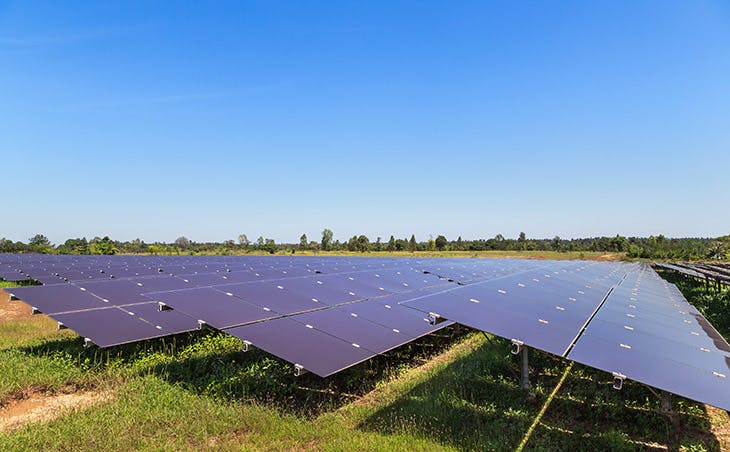
Thin-Film Solar Cells (Amorphous)
Aside from crystalline solar cells, there are thin-film solar cells. Unlike the disc-like wafer mono and poly solar cells, thin-film solar cells are photovoltaic cells that are made of a super thin silicon or sometimes cadmium telluride. This microscopic layer minimizes the use of silicon, incorporating other solar technology that makes thin-film solar cells more sustainable. This super-thin silicon layer of solar cells can be applied to metal and glass panels, which eliminates the sliced wafer manufacturing process and the need to be assembled.
How can thin-film solar cells be used? By using this plastic glazing process, these thin panels offer supreme flexibility and are more lightweight than their crystalline counterparts. They are also pretty durable. Some thin film solar cells have also been found to outperform their crystalline cousins in low light conditions, making it better for regions with cloudier days.
Thin film solar cells and solar panels do have a few drawbacks though. For starters, they do not offer the same efficiency. To accommodate your electrical power needs, this may mean that you will need to install more panels than you would if you were installing a crystalline solar cell panel.
Thin film solar cells and solar panels are also not as durable. As just a microscopic layer of silicon, it can actually break down and degrade over the course of its life. However, thin film silicone tech is advancing each year, so take these words with a grain of salt as they could become as strong as crystalline silicon. Could they become stronger? We’ll have to wait and see. For now, crystalline silicon is the silicon of choice for photovoltaics.
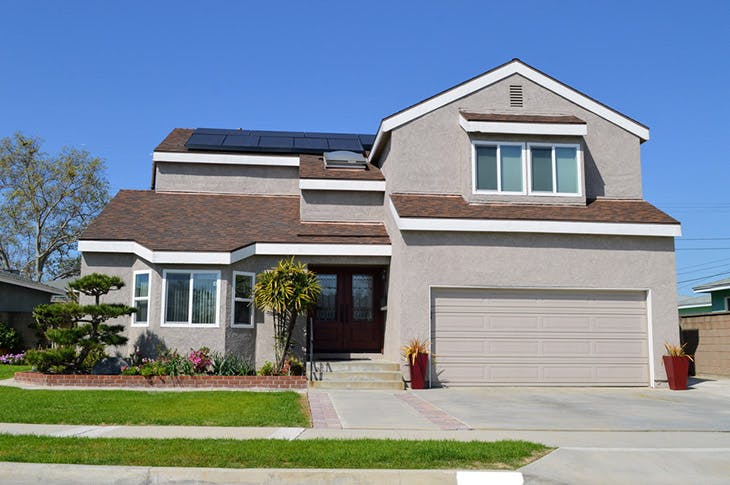
Solar Energy Is Important, Now More than Ever
Solar cells and solar panels bring enormous energy through the power of the sun. Shining down on our planet is roughly 173,000 terawatts of solar energy, which for the record, is 10,000 times what we could ever really need. And as far as we know, the sun is here to stay, unlike nonrenewable resources like fossil fuels.
Capturing the sun’s renewable energy and transforming it into electricity to power our homes and businesses can be a huge step in reducing our carbon footprint and combating climate change as a whole. We have the potential, so what’s stopping us?
Choose Renewable Energy With Solar Panels by Unbound Solar
The International Energy Agency has declared solar energy the world’s fastest-growing power source. But we still have a long way to go.
There was once a time when the biggest hesitation of choosing a renewable resource like solar was the cost. However, today, the solar energy systems and solar installation costs are in decline and are more affordable – and it’s only getting better as solar technology advances. The average homeowner or business can make back their initial investment in a matter of years. Plus, with plenty of federal solar tax incentives and state solar incentives, financial help is not hard to find.
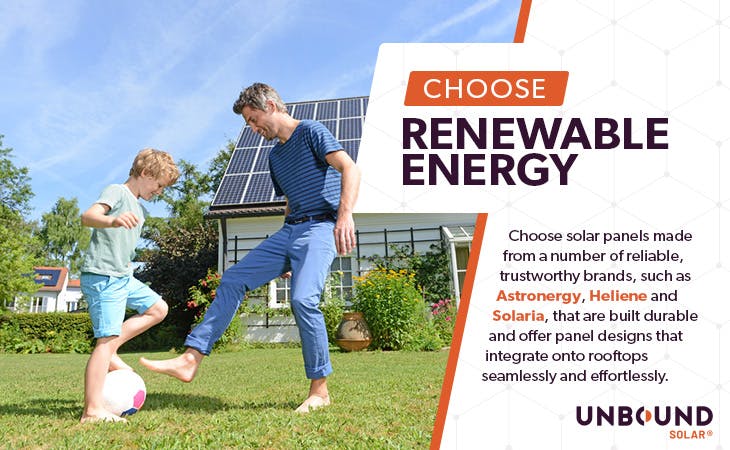
So if you are in the market to buy solar panels to create a greener home, reduce your electric bills or help the environment, Unbound Solar is the place to be. Explore our entire selection of solar panels, including mono PERC cells and polycrystalline solar cells, for your project today. Choose solar panels made from a number of reliable, trustworthy brands, such as Astronergy, Heliene and Solaria, that are built durable and offer panel designs that integrate onto rooftops seamlessly and effortlessly.
Whether you live in cloudier regions of the country like New York or the Pacific Northwest or have sunshine all year round, Unbound Solar has a suitable solar energy system that will capture all your energy needs so that you can live off the grid or simply cut back on energy costs for your home or business.
But most of all – Unbound Solar solar panels put renewable energy in your own hands, so that you can combat climate change to help the earth. Shop Unbound Solar for all your solar power needs, from solar panels to grid ties to energy storage solutions like generators and solar battery banks.
Image Credits
divanov/shutterstock.com
Soonthorn Wongsaita/shutterstock.com
neijia/shutterstock.com
Altrendo Images/shutterstock.com
LariBat/shutterstock.com
KB_3/shutterstock.com
Fit Ztudio/shutterstock.com
